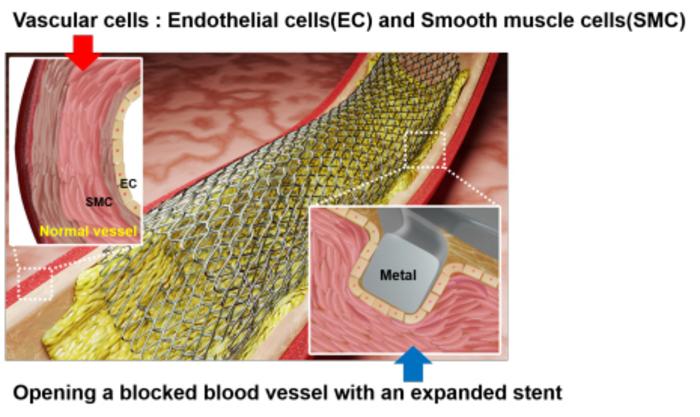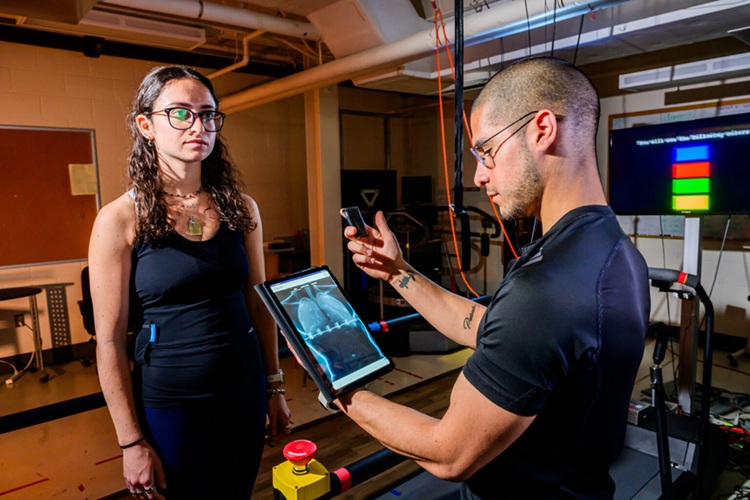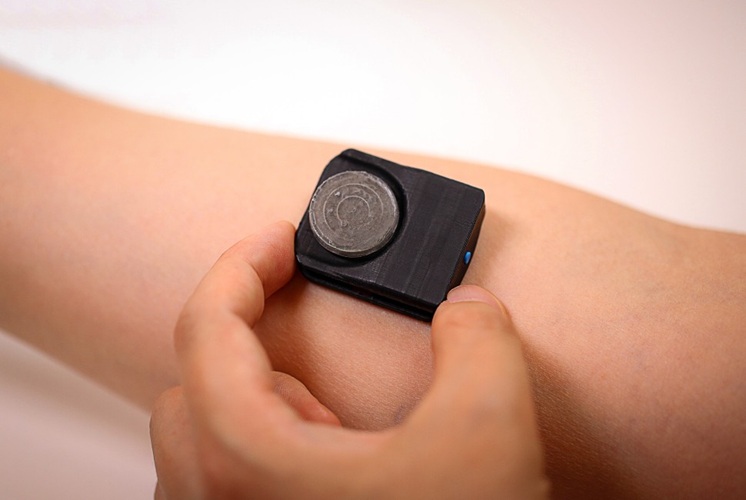Laser Patterning Technology Revolutionizes Stent Surgery for Cardiovascular Diseases
|
By HospiMedica International staff writers Posted on 26 Dec 2024 |

As societies around the world age, the prevalence of vascular diseases among older populations is increasing, highlighting the growing need for therapeutic stents. These devices, which help maintain blood flow by expanding narrowed or blocked blood vessels, are essential in treating various vascular conditions. However, traditional metal stents can lead to restenosis—re-narrowing of the artery—caused by excessive smooth muscle cell proliferation within a month after implantation. While drug-eluting stents are commonly used to address this issue, they can inhibit the re-endothelialization of blood vessels, which raises the risk of thrombosis and requires the use of anticoagulants. To overcome these challenges, research is ongoing to coat stent surfaces with bioactive molecules like proteins or nucleic acids. However, these coatings often fail to adequately promote endothelial cell proliferation. A new stent surface treatment, developed using laser patterning, has shown promise in encouraging endothelial cell growth while inhibiting smooth muscle cell dedifferentiation in blood vessels. By leveraging nanostructured patterns to control cellular responses, this approach could enhance vascular recovery, particularly when combined with chemical coatings.
A research team at Korea Institute of Science and Technology (KIST, Seoul, South Korea) has utilized nanosecond laser texturing technology to create micro- and nano-scale wrinkle patterns on nickel-titanium alloy surfaces. These wrinkle patterns prevent smooth muscle cell migration and morphological changes induced by stent-related vascular injury, thus reducing restenosis. Additionally, the patterns enhance cellular adhesion, aiding in re-endothelialization to restore the vascular lining. The team validated this technique through in vitro vascular cell studies and ex vivo angiogenesis assays using fetal animal bones. The laser-textured surfaces provided an environment conducive to endothelial cell proliferation while effectively suppressing smooth muscle cell dedifferentiation and excessive growth.
The study revealed that smooth muscle cell growth on the wrinkled surfaces was reduced by approximately 75%, while angiogenesis more than doubled, according to findings published in the international journal Bioactive Materials. This surface patterning technology holds promise not only for metal stents but also for biodegradable stents. When applied to biodegradable stents, the patterns could help prevent restenosis and promote endothelialization before the stent dissolves, potentially improving treatment outcomes and minimizing the risk of complications. The research team plans to conduct animal testing and clinical trials to further assess the long-term safety and effectiveness of this innovative laser patterning technology.
“This study demonstrates the potential of surface patterns to selectively control vascular cell responses without drugs,” said KIST’s Dr. Hojeong Jeon who led the research team. “Using widely industrialized nanosecond lasers allows for precise and rapid stent surface processing, offering significant advantages for commercialization and process efficiency.”
Latest Surgical Techniques News
- Intravascular Imaging for Guiding Stent Implantation Ensures Safer Stenting Procedures
- World's First AI Surgical Guidance Platform Allows Surgeons to Measure Success in Real-Time
- AI-Generated Synthetic Scarred Hearts Aid Atrial Fibrillation Treatment
- New Class of Bioadhesives to Connect Human Tissues to Long-Term Medical Implants
- New Transcatheter Valve Found Safe and Effective for Treating Aortic Regurgitation
- Minimally Invasive Valve Repair Reduces Hospitalizations in Severe Tricuspid Regurgitation Patients
- Tiny Robotic Tools Powered by Magnetic Fields to Enable Minimally Invasive Brain Surgery
- Magnetic Tweezers Make Robotic Surgery Safer and More Precise
- AI-Powered Surgical Planning Tool Improves Pre-Op Planning
- Novel Sensing System Restores Missing Sense of Touch in Minimally Invasive Surgery
- Headset-Based AR Navigation System Improves EVD Placement
- Higher Electrode Density Improves Epilepsy Surgery by Pinpointing Where Seizures Begin
- Open-Source Tool Optimizes Placement of Visual Brain Implants
- Easy-To-Apply Gel Could Prevent Formation of Post-Surgical Abdominal Adhesions
- Groundbreaking Leadless Pacemaker to Prevent Invasive Surgeries for Children
- Spectroscopy Technique Improves Surgery for Pediatric Epilepsy Patients
Channels
Critical Care
view channel
Novel Intrabronchial Method Delivers Cell Therapies in Critically Ill Patients on External Lung Support
Until now, administering cell therapies to patients on extracorporeal membrane oxygenation (ECMO)—a life-support system typically used for severe lung failure—has been nearly impossible.... Read more
Generative AI Technology Detects Heart Disease Earlier Than Conventional Methods
Detecting heart dysfunction early using cost-effective and widely accessible tools like electrocardiograms (ECGs) and efficiently directing the right patients for more expensive imaging tests remains a... Read more
Wearable Technology Predicts Cardiovascular Risk by Continuously Monitoring Heart Rate Recovery
The heart's response to physical activity is a vital early indicator of changes in health, particularly in cardiovascular function and mortality. Extensive research has demonstrated a connection between... Read more
Wearable Health Monitoring Device Measures Gases Emitted from and Absorbed by Skin
The skin plays a vital role in protecting our body from external elements. A key component of this protective function is the skin barrier, which consists of tightly woven proteins and fats that help retain... Read morePatient Care
view channel
Portable Biosensor Platform to Reduce Hospital-Acquired Infections
Approximately 4 million patients in the European Union acquire healthcare-associated infections (HAIs) or nosocomial infections each year, with around 37,000 deaths directly resulting from these infections,... Read moreFirst-Of-Its-Kind Portable Germicidal Light Technology Disinfects High-Touch Clinical Surfaces in Seconds
Reducing healthcare-acquired infections (HAIs) remains a pressing issue within global healthcare systems. In the United States alone, 1.7 million patients contract HAIs annually, leading to approximately... Read more
Surgical Capacity Optimization Solution Helps Hospitals Boost OR Utilization
An innovative solution has the capability to transform surgical capacity utilization by targeting the root cause of surgical block time inefficiencies. Fujitsu Limited’s (Tokyo, Japan) Surgical Capacity... Read more
Game-Changing Innovation in Surgical Instrument Sterilization Significantly Improves OR Throughput
A groundbreaking innovation enables hospitals to significantly improve instrument processing time and throughput in operating rooms (ORs) and sterile processing departments. Turbett Surgical, Inc.... Read moreHealth IT
view channel
Printable Molecule-Selective Nanoparticles Enable Mass Production of Wearable Biosensors
The future of medicine is likely to focus on the personalization of healthcare—understanding exactly what an individual requires and delivering the appropriate combination of nutrients, metabolites, and... Read more
Smartwatches Could Detect Congestive Heart Failure
Diagnosing congestive heart failure (CHF) typically requires expensive and time-consuming imaging techniques like echocardiography, also known as cardiac ultrasound. Previously, detecting CHF by analyzing... Read moreBusiness
view channel
Expanded Collaboration to Transform OR Technology Through AI and Automation
The expansion of an existing collaboration between three leading companies aims to develop artificial intelligence (AI)-driven solutions for smart operating rooms with sophisticated monitoring and automation.... Read more















